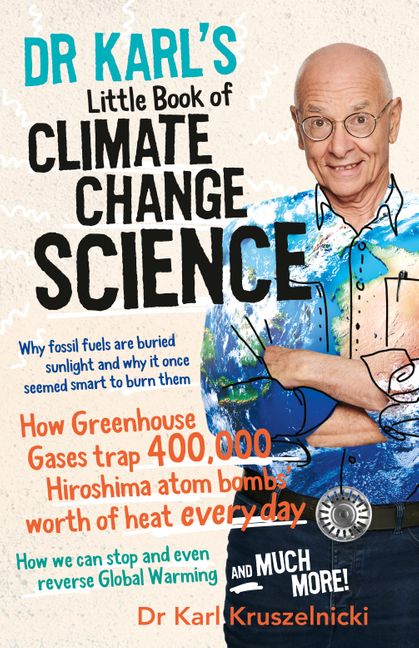Global AI in Climate Change Mitigation Market Report
Chapter 1: Methodology and Scope
- Research Methodology
- Research Scope & Assumptions
Chapter 2: Executive Summary
Chapter 3: Global AI in Climate Change Mitigation Market Snapshot
Chapter 4: Market Variables, Trends & Scope
- Market Segmentation & Scope
- Drivers
- Challenges
- Trends
- Investment and Funding Analysis
- Porter’s Five Forces Analysis
- Incremental Opportunity Analysis (US$ MN), 2025-2034
- Market Penetration & Growth Prospect Mapping (US$ Mn), 2024-2034
- Competitive Landscape & Market Share Analysis by Key Player (2024)
- Use and Impact of AI on Climate Change Mitigation Industry Trends
Chapter 5: Market Segmentation 1 – By Component
- Market Share by Component, 2024 & 2034
- Market Size (Value US$ Mn) & Forecasts and Trend Analyses, 2021 to 2034 for:
- Hardware
- Software
- Services
Chapter 6: Market Segmentation 2 – By Deployment Mode
- Market Share by Deployment Mode, 2024 & 2034
- Market Size (Value US$ Mn) & Forecasts and Trend Analyses, 2021 to 2034 for:
- Cloud-Based
- On-Premises
Chapter 7: Market Segmentation 3 – By Application
- Market Share by Application, 2024 & 2034
- Market Size (Value US$ Mn) & Forecasts and Trend Analyses, 2021 to 2034 for:
- Carbon Footprint Management
- Energy Optimization
- Climate Risk Assessment
- Sustainable Agriculture
Chapter 8: Market Segmentation 4 – By End-User Industry
- Market Share by End-User Industry, 2024 & 2034
- Market Size (Value US$ Mn) & Forecasts and Trend Analyses, 2021 to 2034 for:
- Energy and Utilities
- Transportation
- Agriculture
- Construction
Chapter 9: Market Segmentation 5 – Regional Estimates & Trend Analysis
- Global Market Regional Snapshot 2024 & 2034
- North America
- Revenue Estimates and Forecasts by Country (US, Canada), 2021-2034
- Revenue Estimates and Forecasts by Component, Deployment Mode, Application, End-User Industry, 2021-2034
- Europe
- Revenue Estimates and Forecasts by Country (Germany, U.K., France, Italy, Spain, Rest of Europe), 2021-2034
- Revenue Estimates and Forecasts by Component, Deployment Mode, Application, End-User Industry, 2021-2034
- Asia Pacific
- Revenue Estimates and Forecasts by Country (India, China, Japan, Australia, South Korea, Hong Kong, Southeast Asia, Rest of Asia Pacific), 2021-2034
- Revenue Estimates and Forecasts by Component, Deployment Mode, Application, End-User Industry, 2021-2034
- Latin America
- Revenue Estimates and Forecasts by Country (Brazil, Mexico, Rest of Latin America), 2021-2034
- Revenue Estimates and Forecasts by Component, Deployment Mode, Application, End-User Industry, 2021-2034
- Middle East & Africa
- Revenue Estimates and Forecasts by Country (GCC Countries, Israel, South Africa, Rest of Middle East and Africa), 2021-2034
- Revenue Estimates and Forecasts by Component, Deployment Mode, Application, End-User Industry, 2021-2034
Chapter 10: Competitive Landscape
- Major Mergers and Acquisitions / Strategic Alliances
- Company Profiles
- Google
- Business Overview
- Key Products and Services
- Financial Performance
- Geographical Presence
- Recent Developments and Business Strategy
- IBM Corporation
- Microsoft
- Tesla
- Siemens
- Carbon Clean Solutions
- DeepMind
- C3 AI
- Xpansiv
- Predikto
- Elemental Excelerator
- Enel
- Schneider Electric
- Amazon Web Services
- Autogrid
- Google
Emphasis on Sustainable Development Goals (SDGs)
The Global AI in Climate Change Mitigation Market plays a critical role in advancing multiple United Nations Sustainable Development Goals (SDGs), including:
- SDG 7: Affordable and Clean Energy – AI technologies optimize energy consumption and promote renewable energy integration.
- SDG 9: Industry, Innovation, and Infrastructure – AI fosters innovation in climate technologies and sustainable infrastructure development.
- SDG 11: Sustainable Cities and Communities – AI applications contribute to climate risk assessment and urban resilience.
- SDG 12: Responsible Consumption and Production – AI enhances carbon footprint management and resource efficiency.
- SDG 13: Climate Action – The core focus of the market is to mitigate climate change impacts through advanced AI solutions.
- SDG 15: Life on Land – AI supports sustainable agriculture practices that protect ecosystems and biodiversity.
By integrating AI in climate change mitigation efforts, stakeholders across industries and regions contribute to achieving these SDGs, promoting a sustainable and resilient future globally.
1. Sustainable Development Goals (SDGs) Addressed or Connected
- SDG 7: Affordable and Clean Energy – The article discusses AI applications in energy optimization and energy and utilities industries, which relate to ensuring access to affordable, reliable, sustainable, and modern energy.
- SDG 9: Industry, Innovation and Infrastructure – The focus on AI technology, hardware, software, services, and deployment modes indicates innovation and infrastructure development.
- SDG 11: Sustainable Cities and Communities – AI applications in transportation and construction sectors contribute to sustainable urban development.
- SDG 12: Responsible Consumption and Production – Carbon footprint management and sustainable agriculture applications relate to responsible consumption and production patterns.
- SDG 13: Climate Action – The entire article centers on AI in climate change mitigation, directly addressing climate action.
- SDG 2: Zero Hunger – Sustainable agriculture as an application supports food security and sustainable agriculture.
2. Specific Targets Under Those SDGs Identified
- SDG 7
- Target 7.2: Increase substantially the share of renewable energy in the global energy mix.
- Target 7.3: Double the global rate of improvement in energy efficiency.
- SDG 9
- Target 9.5: Enhance scientific research, upgrade technological capabilities of industrial sectors.
- SDG 11
- Target 11.2: Provide access to safe, affordable, accessible and sustainable transport systems for all.
- Target 11.6: Reduce the adverse per capita environmental impact of cities.
- SDG 12
- Target 12.2: Achieve the sustainable management and efficient use of natural resources.
- Target 12.4: Achieve environmentally sound management of chemicals and wastes.
- SDG 13
- Target 13.1: Strengthen resilience and adaptive capacity to climate-related hazards and natural disasters.
- Target 13.2: Integrate climate change measures into national policies, strategies and planning.
- SDG 2
- Target 2.4: Ensure sustainable food production systems and implement resilient agricultural practices.
3. Indicators Mentioned or Implied to Measure Progress
- Carbon Footprint Management – Implies indicators such as reduction in CO2 emissions, carbon intensity per unit of GDP or production.
- Energy Optimization – Indicators like energy consumption per capita, energy efficiency improvements, share of renewable energy.
- Climate Risk Assessment – Indicators related to climate vulnerability and resilience metrics.
- Sustainable Agriculture – Indicators such as percentage of agricultural land under sustainable practices, crop yield improvements, resource use efficiency.
- Market Size and Growth Forecasts – Financial indicators such as market revenue (US$ Million), investment and funding analysis, and market penetration rates can indirectly measure progress in AI deployment for climate mitigation.
- Deployment Modes and Components – Indicators on adoption rates of cloud-based vs. on-premises AI solutions, hardware vs. software usage.
4. Table of SDGs, Targets and Indicators
| SDGs | Targets | Indicators |
|---|---|---|
| SDG 7: Affordable and Clean Energy |
|
|
| SDG 9: Industry, Innovation and Infrastructure |
|
|
| SDG 11: Sustainable Cities and Communities |
|
|
| SDG 12: Responsible Consumption and Production |
|
|
| SDG 13: Climate Action |
|
|
| SDG 2: Zero Hunger |
|
|
Source: insightaceanalytic.com






